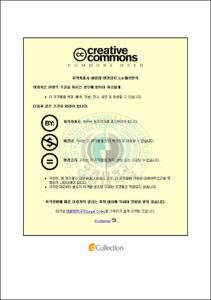창의성 신장을 위한 현대시 교육
- Alternative Title
- Modern Poetry Education To Improve Creativity
- Abstract
- Modern society is knowledge-based. The advance in knowledge and information has brought a drastic change to our lifes, and knowledge and information are very crucial for value creation. A proficient ability to handle knowledge and information is mandatory for modern society as one of higher thinking faculty. As a matter of fact, that is the highest thinking faculty that incorporates all sorts of thinking, which is called creative thinking.
The 7th national language arts curriculum designed to keep up with the 21st century's knowledge-based information society aims at boosting the creativity of students. Although the curriculum apparently sought after the improvement of creativity, it didn't make an explicit definition of creativity and what makes it up nor included adequate teaching- learning methods about that. Likewise, every school fails to teach students in a manner to foster their creativity.
The purpose of this study was to delve into the concept and components of creativity and to analyze the creativity-related elements of learning activities in the poetry segment of textbooks. In fact, the kinds of learning activities that could stimulate divergent thinking, which was of use for creativity development, were inadequate. Therefore a creative problem-solving model and various creativity-boosting techniques were explored in this study.
A teaching-learning model was designed based on a general literary instruction model and Osborn's creative problem-solving model. The newly devised model intended to bolster creativity consisted of four different stages: planning, diagnosing, teaching and internalizing. And the teaching stage was subdivided: problem discovering, idea conceiving and receiving. How to apply the teaching-learning model to the poetry units of the 7th national middle school language arts textbooks was discussed.
It's found in this study that modern poetry education could be one of effective ways to foster learner creativity. But this study had some limitations. The developed teaching-learning model wasn't actually utilized in class to verify its validity, and objective evaluation items that could determine the effect of poetry education on creativity improvement weren't prepared. But this study was meaningful in that it sought after an applicable alternative by analyzing the creativity elements of language arts education and paved the way for the application of it to school instruction.
- Issued Date
- 2008
- Awarded Date
- 2008. 8
- Type
- Dissertation
- Publisher
- 부경대학교 교육대학원
- Alternative Author(s)
- Shin, Hye Jin
- Affiliation
- 부경대학교 교육대학원
- Department
- 교육대학원 국어교육전공
- Advisor
- 조동구
- Table Of Contents
- ABSTRACT
Ⅰ. 서론 1
1. 연구 목적 및 연구사 검토 1
가. 연구 목적 1
나. 연구사 검토 4
2. 연구 방법 10
Ⅱ. 창의성과 시 교육 12
1. 창의성 개념과 구성 요소 13
가. 창의성의 개념 13
나. 창의성의 구성 요소 17
2. 시 교육에서의 창의성 20
3. 교과서 학습활동에 나타난 창의성 요소 분석 24
Ⅲ. 창의성 개발 및 신장 방안 33
1. 창의적 문제해결 33
2. 창의성 신장 기법 37
Ⅳ. 창의성 신장을 위한 현대시 교수·학습 방안 43
1. 창의성 신장을 위한 교수·학습 모형의 설계 43
2. 창의성 신장을 위한 교수·학습 지도안 48
가. 계획 단계 51
나. 진단 단계 52
다. 지도 단계 52
라. 내면화 단계 58
Ⅴ. 결론 60
참고 문헌 64
- Degree
- Master
- Files in This Item:
-
-
Download
 창의성 신장을 위한 현대시 교육.pdf
기타 데이터 / 464.76 kB / Adobe PDF
창의성 신장을 위한 현대시 교육.pdf
기타 데이터 / 464.76 kB / Adobe PDF
-
Items in Repository are protected by copyright, with all rights reserved, unless otherwise indicated.